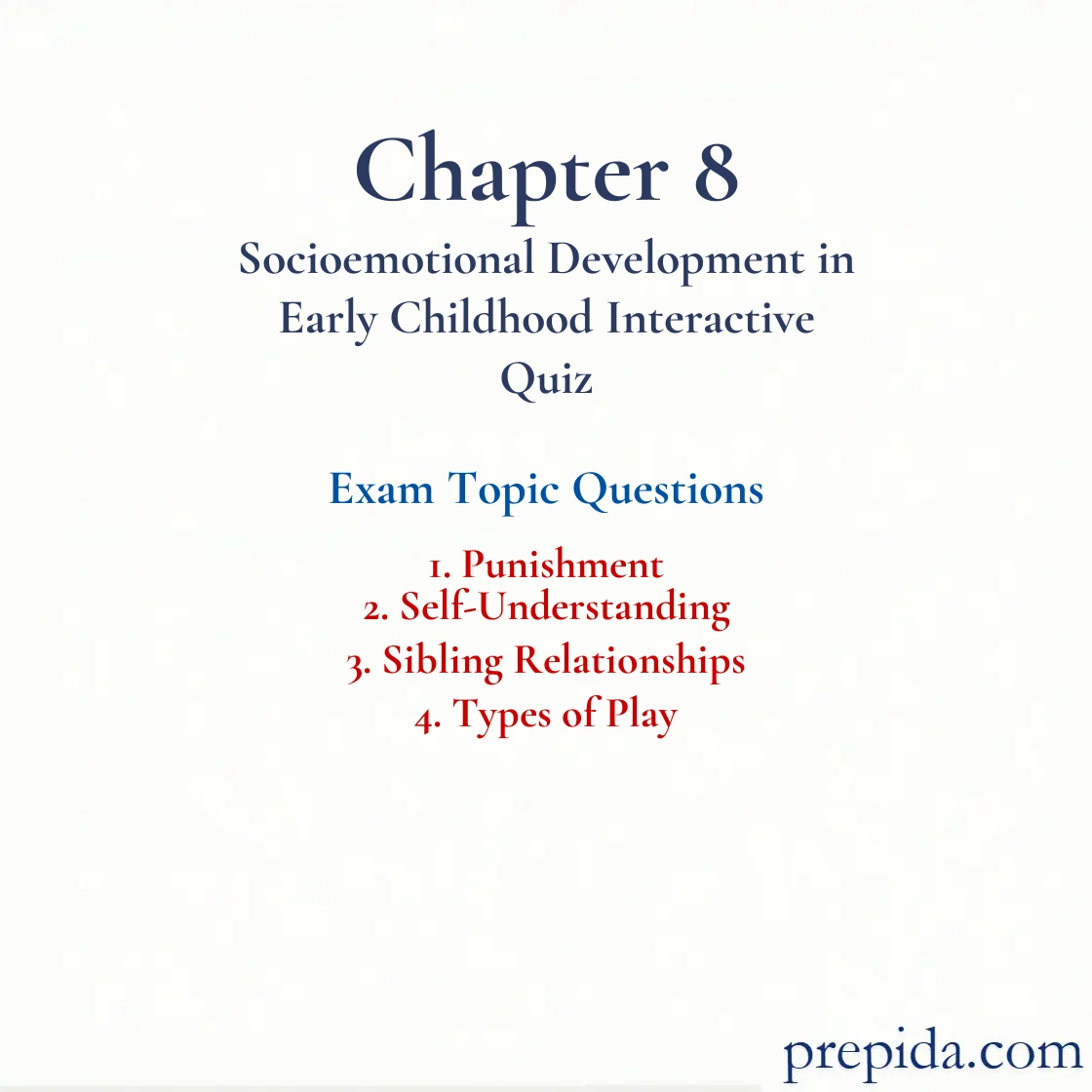
Four-year-old Becky has just hit her sister again. According to most developmental psychologists, Becky's mother should
- spank Becky; she is too young to understand reasoning.
- explain to Becky that "hitting hurts"; she is old enough to understand the consequences of her behavior for others.
- send Becky to bed without dinner; she is too young to understand reasoning.
- spank Becky; she is old enough to understand the consequences of her behavior and would expect to be punished accordingly.
According to most child psychologists, which of the following is an effective way of handling a child's misbehavior?
- mild spanking that would not hurt the child
- time out, in which the child is removed from a setting that offers positive reinforcement
- shouting at the child just enough to get the point across
- instilling rigid household rules and meting out severe corporal punishment if those rules are broken
Four-year-old Harlan says, "I'm always happy!" Researchers suggest that Harlan, like other kids his own age, has self-descriptions that are typically
- reflective of reality.
- reflective of what others think about them.
- abstract and magical.
- unrealistically positive.
In Erikson's portrait of early childhood, the young child clearly has begun to develop ________, which is the representation of self, the substance, and content of self-conceptions.
- self-control
- self-confidence
- self-understanding
- self-centeredness
Self-Understanding: The child’s cognitive representation of self, the substance and content of the child’s self-conceptions.
Laurie Kramer, who has conducted a number of research studies on siblings, says that
- it is best to not intervene in sibling conflict and to allow the siblings to work it out on their own.
- it is best to let sibling conflicts escalate so that children learn coping strategies to handle anger and disagreement with peers.
- intervening and helping children resolve sibling conflict are not good strategies.
- not intervening and letting sibling conflict escalate are not good strategies.
Strategies: Deliberate mental activities that improve the processing of information.
Which of the following is true of the characteristics of sibling relationships as described by Judy Dunn?
- There is no observable variation in sibling relationships.
- Most siblings report that they do not really know each other very well.
- There is considerable variation in sibling relationships.
- Most children have predominantly negative feelings toward their siblings.
In the context of the types of children's play, the play in which infants engage in exploratory and playful visual and motor transactions in the second quarter of the first year of life is known as
- practice play.
- sensorimotor play.
- social play.
- constructive play.
Sensorimotor Play: Behavior engaged in by infants that lets them derive pleasure from exercising their existing sensorimotor schemas.
In the context of the types of children's play, identify a true statement about practice play.
- Practice play primarily involves social interactions with peers.
- Practice play is confined to infancy as children learn to transform objects.
- Practice play occurs when a child transforms the physical environment into a symbol.
- Practice play can be engaged in throughout life.
Practice Play: Play that involves repetition of behavior when new skills are being learned or when physical or mental mastery and coordination of skills are required for games or sports.
________ play, which can be engaged in throughout life, involves the repetition of behavior when new skills are being learned or when physical or mental mastery and coordination of skills are required for games or sports.
- Pretense
- Practice
- Social
- Sensorimotor
Practice Play: Play that involves repetition of behavior when new skills are being learned or when physical or mental mastery and coordination of skills are required for games or sports.
In the context of the types of children's play, which of the following is most likely a characteristic of constructive play?
- It involves deriving pleasure from exercising sensorimotor schemes.
- It increases in the preschool years as symbolic play increases and sensorimotor play decreases.
- It involves interaction with peers.
- It leads to children transforming objects and acting toward them as if they were other objects.
Sensorimotor Play: Behavior engaged in by infants that lets them derive pleasure from exercising their existing sensorimotor schemas.
In the context of the types of children's play, which of the following is a form of play that occurs when children engage in the self-regulated creation of a product or a solution?
- constructive play
- games
- collective play
- social play
Constructive Play: Play that combines sensorimotor and repetitive activity with symbolic representation of ideas. Constructive play occurs when children engage in self-regulated creation or construction of a product or a solution.
In the context of the types of children's play, identify a true statement about pretense play.
- In this type of play, children transform the physical environment into a symbol.
- This type of play often appears at about 7 months of age.
- In this type of play, children refuse to share their pretend play with peers.
- In this type of play, children transform people and act toward them as if they were other people.
Symbolic Function Substage: Piaget’s first substage of preoperational thought, in which the child gains the ability to mentally represent an object that is not present (between about 2 and 4 years of age).